10 Fall Superfoods that are nutritious & beneficial for your athletic performance. Plus, recipe ideas for building a healthy autumn menu!
I can’t believe another summer has officially come to an end! And while I am sad to say goodbye to the warmer weather, I am excited for all the delicious fresh produce that comes with Fall. I don’t know about you, but buying all the new pumpkin-spice and apple cider products at the grocery store has really put me in the fall mood.
But besides pumpkin and apple cider, there are so many different kinds of fall produce that can really benefit you this fall (and winter) season, both nutritionally and in terms of your athletic performance. This list of fall superfoods is a great starting point for building out a healthy autumn menu to fuel your activities.
What is a Superfood?
I often get asked the question…. What exactly is a superfood? And while there is no exact definition, a superfood is usually explained as a nutrient dense food, offering significant health benefits. Foods that are deemed “superfoods” are usually rich in nutrients, vitamins, minerals, and plant compounds, and they’ve been linked to disease prevention.
Some health professionals are wary of the word “superfood” because they don’t want to encourage a list of foods that people should focus on, since it might cause people to disregard those not considered a ‘superfood’. And while I agree that using the term “superfood” can sometimes be a marketing tactic, it can also be a useful guide for those who wish to include more nutrient dense foods in their diet.
At the end of the day, I consider all fruits, vegetables, grains, beans, nuts and legumes to be superfoods! This list of Fall Superfoods is an excellent starting point for anyone hoping to increase their nutrient intake. Each of these foods offer incredible health benefits and earns the title of “superfood”.
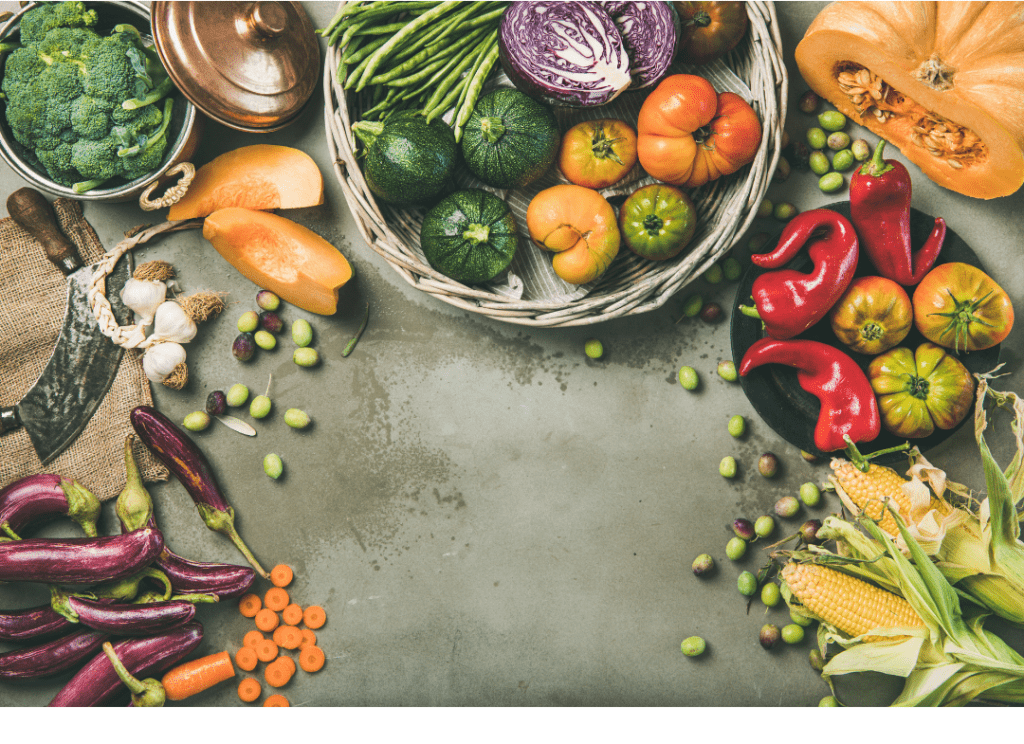
Cranberries
My mind immediately goes to Thanksgiving cranberry sauce when I hear the word ‘cranberry’, but I’m here to tell you that this Fall fruit should not be limited to one day of the year.
The deep red color of cranberries is thanks to a plant compound called anthocyanin, which contributes to their antioxidant and anti-inflammatory properties. Cranberries may protect against Urinary Tract Infections (UTIs) and certain cancers, and they contribute to immune function.
Cranberries also contain the plant compound, proanthocyanidins, which is thought to improve blood cholesterol levels and lower blood pressure. Not to mention that the antioxidant properties of cranberries reduce inflammation, which may help speed up the recovery process after a workout.
Like any produce, they contain the most health benefits when eaten in their most natural form (aka without sugar). The only problem is that cranberries are extremely tart, so most varieties in the store have some sugar added. You can buy whole cranberries and add just a dash of sweetener for a lightened up cranberry sauce.
If you are looking for a healthy, plant-based lunch idea that incorporates cranberries, be sure to check out my Chickpea Salad Sandwich with Dried Cranberries & Apple recipe.

Pomegranates
Have you ever heard the saying ‘dynamite comes in small packages’? Well this could not be a more fitting description for pomegranates.
Pomegranates are rich in antioxidants, Vitamin C and B vitamins. They also contain the plant compounds punicalagins and punicic Acid, which give them their potent antioxidant and anti-inflammatory properties. Pomegranates are also high in quercetin (a flavonoid compound) and nitrates, both of which are believed to help with muscle function and recovery and improved athletic performance.
A study suggests that pomegranates have antioxidant and anti-inflammatory effects during and following exercise. This ruby red fruit may increase blood vessel diameter, which allows for improved blood flow and oxygen delivery to your muscles during exercise, resulting in slower fatigue.
In conclusion, the authors believe pomegranates may improve cardiovascular responses during exercise, enhance endurance and strength performance and increase post-exercise recovery.
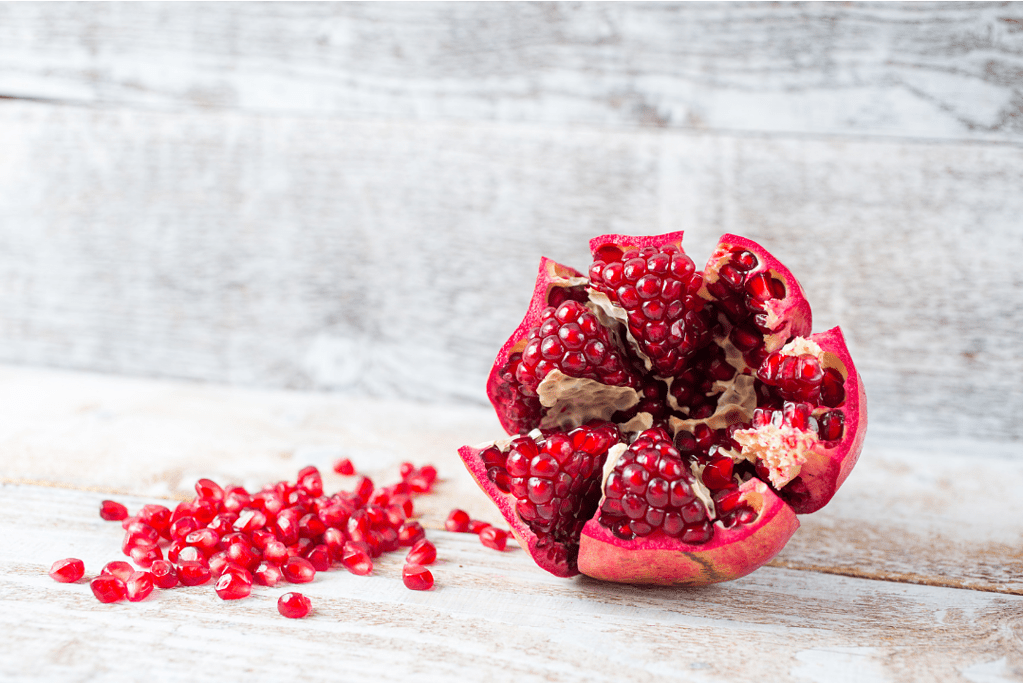
Pumpkin
You may be ‘pumpkined out’ by the end of the Fall season, but this orange gourd is a seriously impressive superfood that offers some incredible health benefits.
Besides being rich in fiber, pumpkin is high in Vitamin A– it has 345% of the recommended daily intake (RDI)–, it’s also a good source of Vitamin C and Vitamin E – all of which are antioxidants and support immune health.
Pumpkins also contain potassium, an important electrolyte for hydration during workout. Electrolytes are necessary for preventing muscle cramping and fatigue.
Better yet, you know those seeds that you usually scrape out and toss in the trash? Well, those pumpkin seeds are, in fact, a great source of magnesium. This mineral boosts energy production and supports muscle and nerve function. One hundred grams of pumpkin seeds offers 262 mg of magnesium, nearly 70% of RDA.
Pumpkin seeds are also a good source of iron and phosphorus, which help to deliver oxygen to the muscles and improve muscle function. Looking for pumpkin inspiration? Here are of my favorite healthy pumpkin recipes:
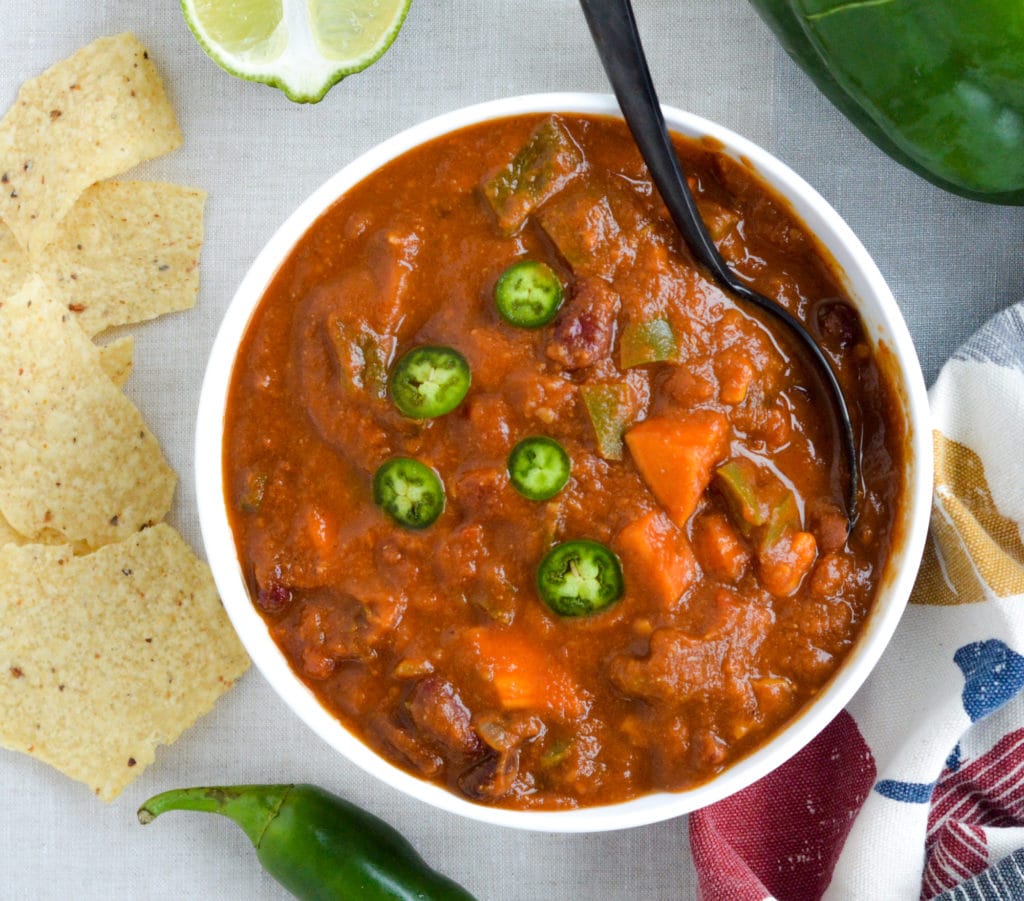
Sweet Potato
I am a big fan of eating sweet potatoes all year round, but they are definitely the most delicious during the fall season.
Sweet potatoes are an excellent source of complex carbohydrates, which break down slowly and provide long lasting energy to fuel a workout. They also contain anthocyanins, otherwise known as plant compounds that fight post-workout inflammation.
Sweet potatoes are rich in Vitamin A, with up to 100% of your daily Vitamin A in one medium sweet potato. Consuming enough vitamin A is especially important if you’re training intensely, since this vitamin contributes to a healthy immune system.
One of my favorite ways to eat sweet potatoes is in this Sweet Potato & Kale Quesadilla recipe. A quick and easy dinner that only requires 4 simple ingredients – kale, sweet potato, parmesan cheese and whole-wheat tortillas.
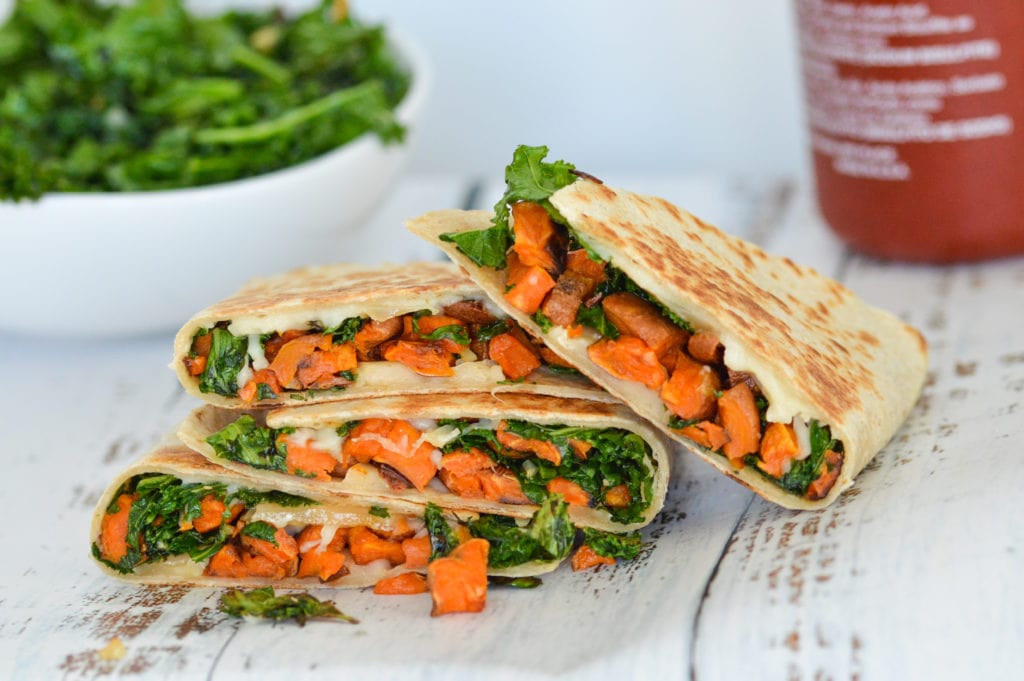
Squash
If you’ve been to the grocery store recently, you’ve likely seen the beautiful display of winter squash. From butternut to spaghetti squash, the choices are endless – each offering nutritional benefits for athletes.
Squash is a fall and winter superfood that is high in Vitamin A, B, C, complex carbs, fiber, potassium and magnesium. And while fiber may help move along the digestive system, the fiber in squash likely won’t cause gastrointestinal distress during a workout.
Squash is also a great way to load up on Vitamin B6, which helps break down amino acids and muscle glycogen into glucose. Squash is also rich in potassium for improved muscle function and hydration And if you’re looking for food that will boost your immune system over the next few months, the Vitamin A content in squash is great for exactly that.
If you’re racking your brain for tasty ways to cook squash, I have heaps of recipes that take squash to the next level!
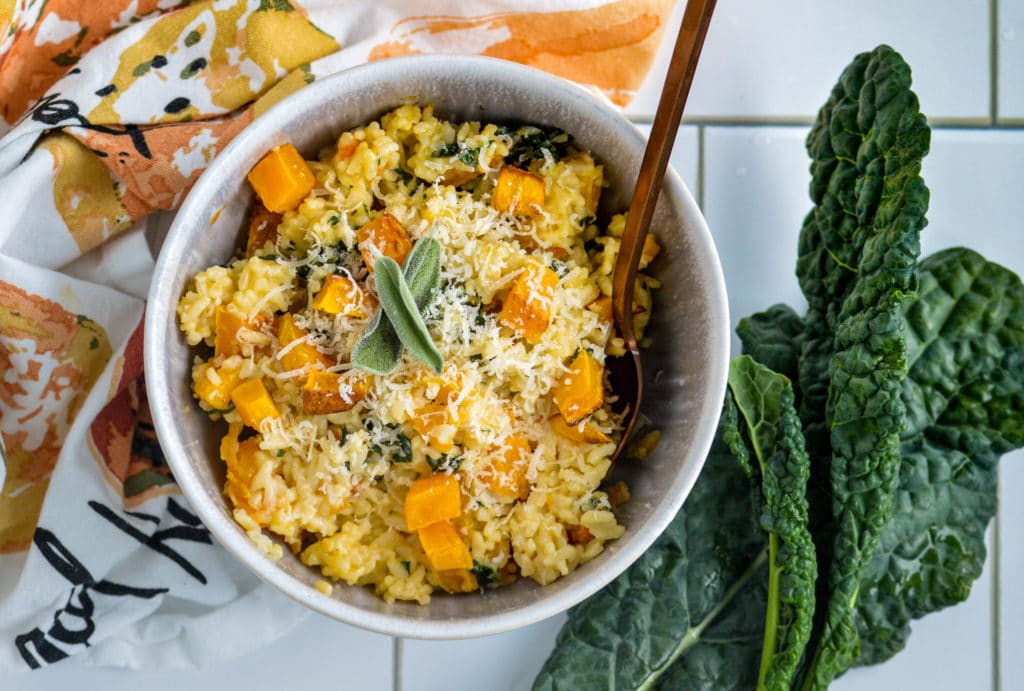
Apples
Apples are one of my favorite fall fruits! They are so versatile and can be added to muffin mix, salads, pie, pancakes and a crisp. And with apple-picking season officially here, you may be left with way too many apples and no idea how to use them all.
Apples are rich in the flavonoid quercetin, which exists in the skin of the fruit. Quercetin offers immune-boosting, antioxidant, anti-inflammatory and heart health benefits. The anti-inflammatory properties of quercetin may reduce muscle stiffness and swelling that often occurs after a high intensity workout.
In addition, studies have linked the antioxidant and anti-inflammatory properties of apples to improved bone health – lessening your risk of injury and fractures.
If you’re looking for some ideas as to how to use your leftover apples in a healthy and plant-based way, try some of my recipes below!
- Apple Protein Pancakes
- Frisée Salad with Apples & Goat Cheese and Maple Vinaigrette
- Pumpkin Apple Muffins
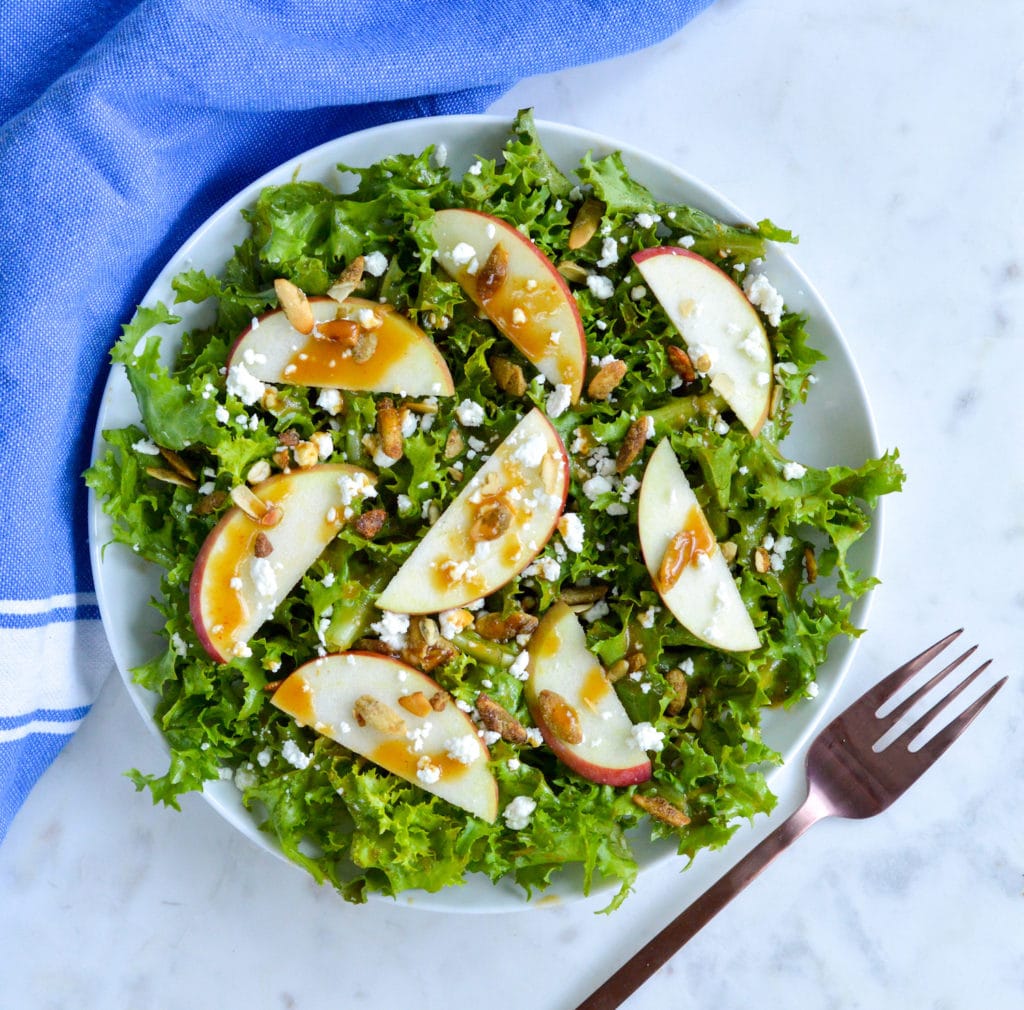
Brussels Sprouts
This tiny cabbage is soaring in popularity, and that’s a good thing because they pack a nutrient punch!
Brussels sprouts are a great source of fiber, potassium, folate, Vitamin C and Vitamin K. In fact, 1 cup of brussels sprouts meets 100% of the RDA for potassium, which is important for blood clotting and for improved wound healing. Folate forms an integral part of metabolism and DNA formation.
And Vitamin’s C and K play a role in immune health and blood clotting. If you’re looking for some ideas as to how you can brussels sprouts your new favorite fall vegetable, take a look at some of my brussels sprouts recipes:
- Sweet orange glazed brussels sprouts flatbread
- Brussels sprout and grapefruit slaw
- Brussels sprout naan pizza with an egg on top

Cauliflower
Cauliflower is an incredibly versatile cruciferous vegetable, with a flavor and texture profile that can elevate any recipe. From cauliflower steak to cauliflower rice, it has become one of the trendiest vegetables out there!
Cauliflower is a good source of folate, fiber and B Vitamins. But what makes cauliflower a superfood? Well, cauliflower’s main vitamin is immune boosting Vitamin C. Just 1 cup of cauliflower has 77% of the RDI for Vitamin C. Vitamin C keeps your immune system strong to hopefully fight off that winter flu.
Vitamin C is also a precursor for collagen production, which contributes to healthy skin and joints. In addition, vitamin C is a powerful antioxidant that can reduce the inflammation of muscles associated with exercise. For maximum Vitamin C absorption, you’ll want to eat it with a food source rich in iron – like lentils, chickpeas or tofu.
For more ideas of how to incorporate cauliflower into your diet, try these recipes
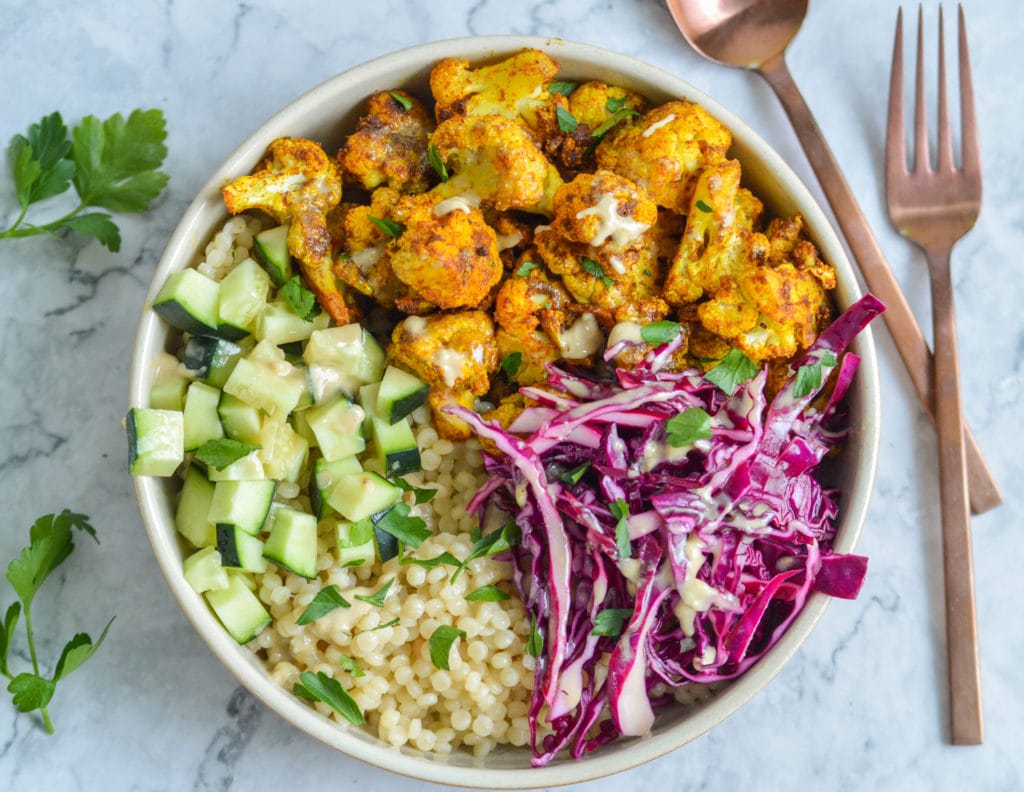
Beets
Beets- you either love them or you hate them! I have to admit, I haven’t always been a beet fan, but I’m slowly starting to enjoy them more as I find exciting and tasty ways to incorporate them into my recipes.
Beets are packed with nutrients, fiber, minerals and vitamins. More specifically, they contain the antioxidant, betaine, which is good for reducing inflammation.
There is also lots of conversation about the benefits of beetroot juice. Beets contain nitrates, which the body converts to nitric oxide in the body. This conversion helps the muscles take in oxygen, resulting in less time to fatigue during a workout.
Nitric oxide has been shown to improve cardiorespiratory endurance, increase blood flow and strengthen muscle contraction. On top of that, beets are a great source of Vitamin A and Vitamin K.
One of my favorite ways to eat beetroot is in my Roasted Beet & Orange Quinoa Salad.

Kale
Kale is probably one of the most well known superfoods! And for good reason.
It is rich in Vitamin K and a great source of Vitamin A, C and manganese. Not to mention, this green leafy vegetable is packed with iron– a mineral that vegetarian and vegan athletes need. Eating iron rich plant foods can help prevent iron deficiency anemia and ward off any fatigue that can come if your iron levels are low.
Interestingly enough, kale is also a good source of plant-based calcium. Calcium is an important mineral for bone health, and with adequate intake of calcium, you can reduce your risk of stress fractures.
And anytime you are experiencing some kind of inflammation, dark green leafy vegetables are your go-to due to their high antioxidant levels. Did you know that the darker the vegetable, the higher the antioxidant content? That’s what makes kale such a great food for fighting inflammation.
Here are some of my favorite Fall recipes that include kale:



0 Comments